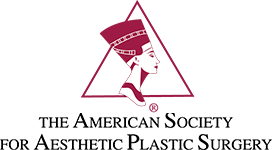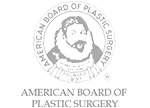If you’ve been noticing sagging skin, deeper lines, or that your reflection looks more tired than you feel, you’re not alone. Many men and women reach a point where creams, injectables, and filters just aren’t enough anymore. That’s usually when people start asking about a facelift.
At Congressional Plastic Surgery, our patients often tell us the same thing: “I just want to look refreshed—not pulled, not different, just like myself again.” That’s exactly the approach we take.
But before making a decision, it’s natural to have questions:
- What really happens during a facelift?
- How long is recovery?
- Am I even the right candidate?
Let’s walk through it together, step by step.
What a Facelift Really Does
A facelift (or rhytidectomy, if you like medical terms) isn’t about changing your face—it’s about turning back the clock a bit so your outside matches how youthful and vibrant you feel inside.
It can help with things like:
- Loose skin along the cheeks, jawline, or neck
- Jowls that blur your jawline
- Deep folds running from your nose to your mouth
- Neck banding or sagging skin that makes you look older than you feel
Unlike non-surgical treatments that fade in a few months, a facelift offers results that can last for years. Many of our patients are in their 40s, 50s, 60s, and beyond, and they often say it’s the best decision they’ve made for themselves.
Your First Step: The Consultation
Your facelift journey begins with a one-on-one conversation. At your consultation in our Tysons Corner office, we focus on listening. We want to understand what bothers you, what results you’re hoping for, and how you want to feel when you look in the mirror.
From there, your surgeon will:
- Review your health history to make sure you’re a safe candidate
- Examine your facial structure and skin
- Explain different facelift options (traditional, mini facelift, neck lift add-ons, etc.)
- Answer every question—whether it’s about downtime, scarring, or what results realistically look like
By the end, you’ll have a plan that’s tailored specifically to you—not a one-size-fits-all approach.
Getting Ready for Surgery
Preparation is key to great results. In the weeks before surgery, your surgeon may recommend steps like:
- Avoiding blood thinners or supplements that increase bruising
- Quitting smoking to help your body heal faster
- Setting aside recovery time and arranging help for the first few days
- Following a simple skincare routine to get your skin in the best shape possible
The Day of Your Facelift
Here’s what you can expect when the day arrives:
- You’ll be kept comfortable with anesthesia or IV sedation
- Small, well-hidden incisions are made along the hairline and around the ears
- The deeper tissues and muscles are gently lifted and secured for a natural contour
- Any extra skin is trimmed and carefully closed with fine sutures
- Bandages or a supportive wrap are placed to help with swelling
Most surgeries take just a few hours, depending on whether you’re combining your facelift with something else—like eyelid surgery or fat grafting.
What Recovery Looks Like
Every patient heals at their own pace, but here’s the general flow:
- First few days: Expect some swelling and tightness, though most patients say pain is very manageable.
- One week in: Stitches come out, and you’ll be moving around more comfortably.
- Two to three weeks: Bruising fades, and you’ll probably feel ready to see friends or run errands again.
- Four to six weeks: You’ll be back to most normal activities, and your results will look more natural each day.
- Three months and beyond: Everything settles beautifully—you’ll see the refreshed, younger version of yourself looking back in the mirror.
Keeping Results Natural
No one wants to look “done.” At Congressional Plastic Surgery, our surgeons lift and reposition deeper tissues—not just pull skin tight. That’s why results look refreshed, never stretched. Incisions are hidden in natural creases and the hairline, and most scars fade until they’re barely noticeable.
Pairing a Facelift with Other Treatments
A facelift mainly rejuvenates the mid- and lower face, but sometimes patients combine it with:
- Eyelid surgery for a brighter look
- Brow lift for smoother foreheads and higher brows
- Fat grafting for restoring lost volume
- Skin treatments like lasers or peels for better tone and texture
These combinations can create a balanced, harmonious transformation.
Who Makes a Good Candidate?
You may be a good fit if you’re:
- In good health
- A non-smoker (or willing to stop for surgery and recovery)
- Experiencing noticeable sagging or deep folds
- Realistic about what surgery can (and can’t) achieve
Life After Your Facelift
The best part? The confidence that comes with it. Many of our patients share that they finally feel like their reflection matches how energetic they feel inside. Results often last 10 years or longer, especially with healthy habits and good skincare.
Why Choose Us in Tysons Corner?
At Congressional Plastic Surgery, we combine advanced training, years of experience, and an artistic eye for natural beauty. But what patients tell us they appreciate most is our honesty, compassion, and personalized care.
You’ll find:
- A customized plan built around your features and goals
- Safety and comfort as top priorities
- Accredited surgical facilities right here in Tysons Corner
- A supportive team walking with you every step of the way
Ready to Learn More?
If you’re considering a facelift, we invite you to sit down with us for a consultation. There’s no pressure—it’s simply a chance to explore your options and get answers to your questions.
Because in the end, a facelift isn’t just about looking younger. It’s about feeling like yourself again—confident, refreshed, and aligned with the way you want the world to see you.






